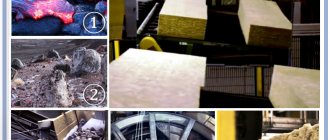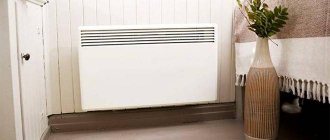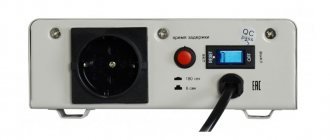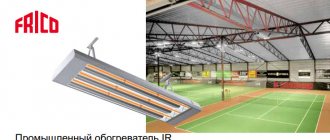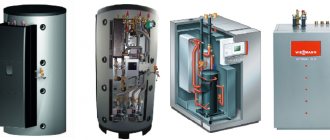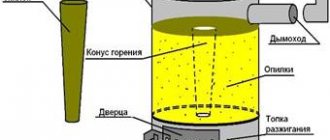Household infrared lamps as heating equipment are a promising and interesting solution. Agree: it’s a good idea to acquire a compact device with high efficiency, which is also easy to use. But you don't know what to consider when choosing an IR bulb?
We will tell you how to choose the best IR light bulb for your home, garden and farmstead. The article we have presented discusses the features of their design, provides the pros and cons, and the appropriateness of use. To make the task of choosing easier, the best manufacturers with a reputation in the lighting market are listed.
To help customers, the information is supplemented with photographs of IR bulbs, video recommendations and useful tips. Taking into account our recommendations, you can easily find a device that can provide high-quality heat with characteristics comparable to the sun’s rays.
What is infrared heating?
IR lamps emit heat rays. Objects that are within the range of such devices absorb these waves and then transfer the resulting heat to the surrounding air. The nature of infrared rays is comparable to the characteristics of ordinary visible light, insofar as they obey the laws of optics in the same way.
Although IR waves have the same transparency, refractive and reflective indices as visible light waves, their specific properties have slightly different characteristics. For example, such radiation has difficulty traversing a layer of water only a few centimeters thick, but silicon wafers easily pass it through.
Aluminum reflects infrared rays much better than visible light waves, the reflectivity can reach 98%. Such radiation is practically not absorbed by air, which ensures a high level of efficiency for heaters of this type. But water vapor, ozone, carbon dioxide and other “fillers” can significantly spoil the matter.
Infrared waves pass through airspace with virtually no loss of thermal energy, which is absorbed by surrounding objects and propagates from bottom to top.
Unlike convection heating, IR waves do not heat the air around the device, but the surfaces of objects to which they are directed. The air is already heated by these objects. Understanding this principle will help you use infrared heating devices correctly.
Advantages and disadvantages
Pros of the IR element:
lightness of the product (up to 200 g);
simplicity of installation work that does not affect the design of residential premises;
high energy efficiency;
possibility of operation in rooms with maximum humidity;
high speed of heating of solid objects;
silent operation;
the risk of fire is minimized;
possibility of spot heating/direction of electromagnetic waves in a given direction.
Disadvantages of using an IR element:
high price;
inappropriateness of using lamps as the main source of heating.
To minimize the risk of burns, it is necessary to maintain a certain distance from the source of electromagnetic waves (1-1.5 m).
IR lamp device
An infrared lamp is intended not so much for lighting as for heating. To provide heat to an entire room or even a house, special heaters of various types and sizes have been created. IR lamps are more suitable for thermal effects on specific areas of the room.
The most common models of such devices are a glass bulb containing a tungsten filament inside.
The mirror coating directs the flow of infrared radiation in the desired direction and increases the efficiency of thermal effects. Most often, such a light bulb can be screwed into a standard E27 type socket and powered from a regular 220 V network.
An infrared lamp consists of a bulb and a reflector, with an incandescent filament inside. The device has a standard E27 base, which allows it to be used with suitable lamps
The lamp power can vary between 50-500 W. It is not recommended to use a plastic cartridge with such devices; it is better to take ceramics. The socket and lampshade for an IR lamp must withstand heating up to 80 degrees; not every plastic is capable of this.
For the same reason, it is not recommended to touch the switched on IR lamp, as you may get a serious burn. A grille is used to protect against accidental touches.
Traditionally, infrared lamp bulbs are painted red, but models with clear glass are also popular. Blue IR lamps are also available
The glass from which such a lamp is made can be standard, tempered or pressed. The flask is left clear, but is often colored red or blue.
Contrary to popular belief, blue coloration is not at all an exclusive feature of ultraviolet devices. The filament in IR lamps can be made not only from tungsten; some manufacturers use carbon fiber for these purposes.
The reflector is labeled as IKZK, IKZS and IKZ, which indicates red, blue or no coloration. Separately, it is worth mentioning IR lamps, made not like a traditional bulb, but like a narrow tube.
The bulb of a ceramic infrared lamp is more resistant to heat, moisture, temperature changes and shock than glass counterparts
Finally, there is a very special type of lamp of this type, they are equipped with a ceramic body and are intended only for heating where lighting is not needed.
A nichrome or fechral thread is used as a heating element in such devices. These are very strong and durable devices; they are not afraid of contact with water splashes. Such devices are widely used for night heating of young animals, as well as for keeping exotic animals at home: reptiles, snakes, etc.
Film-type infrared heating (PLEN)
Another type of heaters with infrared radiation is resistive foil film. Many consumers know it as infrared heated floors. Although in most cases such film is laid under the finishing floor covering, as an option, it can be laid over the entire ceiling or on the walls.
Film-type heating systems have one installation feature - they should not be placed on top of the walls or ceiling, but between the finishing cladding material and the thermal insulation layer.
Thanks to this approach, the use of film heating will be as efficient as possible and will reduce heat loss to a minimum. At the same time, the heating elements of the heating system will not be visible on the surface, so the consumer can implement even the most daring design projects in his home, in which there is no place for traditional floor or hanging heaters.
Practice shows that equipping a residential building with infrared film heating devices helps save energy and financial resources for the consumer by up to 40%.
We hope that the information provided about infrared light lamps for heating will be useful to the consumer, so that he can independently decide on the type and number of heating devices for his home.
Features of choosing the appropriate option
Most often, the IR lamp is designed for a standard E-27 cartridge, but there are other options; this point should be taken into account before purchasing.
In addition to the type of base, when choosing an infrared lamp, you should take into account such indicators as:
- IR radiation wavelength
- heating device power
- voltage .
Long, medium and short wave infrared radiation differ in the amount of heat and light. The brighter the infrared lamp shines, the shorter the radiation wave, and the further the area of its penetration.
The heat of devices emitting long waves is considered to be milder in effect. There are usually no problems with voltage, since household appliances of this type are traditionally designed for a voltage of 220 W in a regular network.
To avoid getting burned on the surface of the infrared lamp, and to protect the device from damage, you should use protective grilles
As for power, it is chosen depending on the size of the area that needs to be heated. For 10 square meters it is recommended to take 1 kW of power. You can slightly increase the resulting figure, depending on the heat loss.
This is true for poorly insulated rooms, objects located on a cold floor, if the room has old windows with cracks in dry frames, etc.
IR lamps vary in shape and diameter, they are marked according to these characteristics. To understand the dimensions of the product from the code, you will have to do some calculations. The numerical indicators that are indicated next to the letter code must be divided by 4 to obtain the diameter dimensions in inches.
The result obtained is easy to convert into centimeters. For example, for a PAR38 lamp the calculations would be as follows: 38:4=4.75 inches; 4.75*2.54=12.07 cm. The letters indicate the shape of the flask, the code meaning is presented in the table:
The shape of the infrared lamp bulb can be very different; this point is reflected by letter markings. The short body fits better under the lampshade, reducing glare
The number R indicates the presence of a reflector. Such models usually have a very simple design. The glass part of the bulb through which the radiation passes is monolithically connected to the reflector; inside there is a layer of reflective paint. The lighting angle is more than 45 degrees.
Models marked BR are lamps with a convex reflector coated with paint or other reflective material.
The transparent bulb combined with it can be glossy or matte; sometimes there is an option with cells that reduce the level of radiation scattering. Such models also usually have a lighting angle of over 45 degrees.
IR lamps are well suited for uniform and gentle drying of various surfaces that have been painted or coated with a layer of varnish
PAR type models are equipped with an aluminum-coated parabolic reflector. A tempered glass flask with a cellular structure is attached to it. The precisely calculated shape of both elements ensures complete sealing of the device.
Typically, such models are slightly shorter than the analogues described above; they are considered more reliable and suitable for use in difficult conditions.
Characteristics
The main characteristics of infrared lamps are:
- incandescent temperature – 600 ℃;
- maximum operating power – 500 W;
- mains voltage – 220 V;
- infrared wave range – up to 5 microns;
- service life – up to 6000 hours.
When choosing IKZK lamps for heating in your home, you should calculate their number based on the power standard of 1 kW per 10 m2. This standard applies to insulated rooms with plastic double-glazed windows, as well as with insulation laid on the floor, ceiling and doorway. If there are uninsulated places in the room through which the cold can penetrate into the room, you will have to increase the number of heating devices or their power.
Benefits of IR heating
As already mentioned, IR lamps are used for spot heating of individual zones. Although in crop production or livestock farming, several lamps can fully meet the heat needs of a greenhouse, chicken coop, etc. It is advantageous to heat a winter garden, balcony, free-standing kiosk, and other similar objects using IR lamps.
Here are the main advantages of devices of this type:
- compact dimensions;
- easy installation;
- high efficiency;
- heat distribution without the use of fans, etc.
The air practically does not absorb infrared waves, which deliver heat directly to the object being heated. As a result, there is no need to direct heated air currents so that they spread throughout the room, as is done with convection methods. Even if the lamp is located near the ceiling, the heat will reach its target.
This heater does not require oxygen to operate, so its presence has a beneficial effect on the atmosphere in the room.
When raising chickens, infrared heating is a must. At night, you can use a ceramic lamp that does not produce light
Due to the lack of convection, dust also does not move around the house. IR lamps are not difficult to store if they are only used seasonally. To install or dismantle the device, you simply need to screw it into or out of the socket.
The device does not require special storage conditions; if handled with care, it will more than fulfill the resource intended by the manufacturer.
Such lamps are convenient to use if you need to heat a specific place. For example, if the balcony turns out to be too cold in winter, a couple of small lamps will help quickly solve the problem, and in the summer they can simply be removed and hidden. It is also worth remembering the beneficial effects of infrared radiation on human health.
If you equip an infrared lamp with a temperature regulator, you can change the heating intensity depending on the situation
They are used for medicinal purposes in medical institutions, but the healing effect does not disappear at home either. Although there are medical devices for treatment, household lamps are not suitable for this.
Another advantage of infrared lamps is the ability to easily change the height of the lamp above the floor. This point is especially relevant when growing plants and young animals.
Scope of application of heat lamp
The properties of infrared lamps allow them to be used in various areas of human activity.
Household use
Rooms are heated with IR lamps. They are often used as an auxiliary heating device if the main equipment is not working well.
Short-wave or medium-wave devices create a comfortable environment in the room in a few seconds.
Halogen IR lamps are great for outdoor heaters. They are installed near pools and in open areas.
Infrared heaters solve problems that are beyond the capabilities of other types of devices. With their help, in winter they create a thermal barrier that protects against cold radiation from windows, stained glass windows, and large domes.
At the same time, such designs eliminate freezing. IR heaters melt snow on porches, paths, and garage exits.
Greenhouse maintenance
Infrared lamps heat greenhouses well. Single light bulbs can also be adapted by hanging them above the plants. Either option creates conditions similar to those that arise with solar radiation.
IR lamps compensate for the lack of light and heat, but use requires caution. If the power and duration of irradiation is exceeded, the plants may die.
Animal breeding
Infrared lamps have long been used in poultry farming. Little chicks need warmth. The young gather under the lamp and warm themselves.
Similar devices are used for animals. When newborns are separated from their mother, they are warmed with low-power infrared lamps. To enhance the effect, cages where animals are kept are covered with reflective material.
During severe frosts, rural residents turn on IR lamps to heat poultry houses, otherwise even adult birds may freeze. Similarly used in winter in relation to nutria, rabbits and other animals.
Video on this topic:
Treatment of people
In medicine, devices with infrared lamps have long been used. They are also used for home treatment. Infrared radiation, affecting human skin, accelerates blood circulation and metabolism. The person’s well-being improves.
Use is recommended for the following diseases:
- colds: acute respiratory infections, rhinitis, tonsillitis, otolaryngological diseases;
- for pain and muscle spasms;
- arthritis in the joints;
- hypertension.
Contraindicated for use in cases of cancer, tuberculosis, and purulent inflammatory processes. Not recommended for pregnant women, people with chronic lung and heart diseases.
Relevance of lamp heating
Such lamps are widely used in livestock farming, both in the industrial sector and in small households. Infrared lighting is almost indispensable when raising newborn offspring. It creates a suitable temperature, gently dries bedding materials, and produces a disinfecting effect.
Heating with infrared lamps is widely used in greenhouses. To serve one room, several lamps are usually used, which are hung at some distance from each other.
For piglets in the first week of life, it is recommended to use a lamp of the IKZK-250 type, the hanging height from the floor is 50 cm. In the next two weeks, the lamps are raised another 25 cm, then this distance is increased to one meter. At this height, this model allows you to heat approximately one square meter of area.
To raise chickens, you should use an infrared lamp, which can warm the cage to 23-32 degrees. During the day, the temperature should change, so you will need to install a thermometer in the cage, and a thermostat outside, which will change the heating intensity.
Scientist Mark O. Nore argues that different lighting colors can significantly affect the development and behavior of young birds
Some believe that red bulb lamps should be used in the first 20 days of a chick's life to reduce stress on the chicks. The wiring must be routed along the outside of the cage. It is recommended to use lamps with a protective grille to protect the chicks from being burned and the glass from damage.
Periodically, after cooling, it is necessary to clean the surface of the device with a damp cloth to remove dirt, otherwise it will work under increased load and may burn out too quickly. For chickens, you should not take cheap lamps with thin bulbs that burst upon accidental contact with drops of water.
Infrared heat is very beneficial for young pets. Such lamps allow you to maintain optimal temperature conditions, prevent the development of diseases, and strengthen the immune system.
In small home greenhouses, the level of heating depends on the needs of the crops grown there. You will need several lamps, usually the distance between them is about one and a half meters. The lamps are hung in such a way that the height can be changed: they are raised up as the plants grow to avoid overheating.
In addition to these areas, infrared radiation is also successfully used in the construction and automotive industries for drying various surfaces. IR light is also suitable for drying herbs, spices, food products, etc. Another option is to heat the plastic for molding work.
Household use
Infrared lamps and emitters are successfully used in rural farmsteads for heating young poultry, piglets, lambs and kids.
In addition to heating, these devices have a positive effect on the health of newborn animals and excellently dry the bedding. When using the product “IKZK-250” in a pigsty, when raising piglets, the following scheme is recommended:
- To heat baby pigs from birth to 7 days , heater lamps are suspended at a height of 0.5 meters from the floor.
- When the piglets are 2-3 weeks , the height is increased to 0.75 meters.
- Upon reaching three weeks of age , the device is placed at a height of 1 meter, while the heating area of one lamp is 1 square meter.
To heat chickens and ducklings, it is advisable to equip the emitter with a simple power regulator (a Chinese model can be found for 150-200 rubles).
Typically, for heating poultry, Russian electrical appliances “IKZK 220-250 R127” are used, which can be purchased for up to 200 rubles, or German ones – “OSRAM SICCA 250W E27” costing about 500 rubles.
In rural areas, where power surges and surges are common, it is advisable to provide power to IR heaters (to increase their service life) through the UZL 300/500 protective device
When using IR devices for heating animals, certain rules must be followed, which will not only improve the conditions for their cultivation, but will also make the process safer:
- The temperature in the heating zone should be 25-32 degrees; it is regulated either by changing the height of the lighting fixtures or by adjusting the power of the infrared light source itself.
- Frequent switching on and off of lighting devices is not recommended.
- The surface of the flask in a livestock building should be wiped periodically, otherwise the settled dust will lead to overheating of the device and it will burn out.
The effectiveness of using IR heaters in livestock and poultry farming is not only scientifically proven, but also confirmed by numerous reviews:
Sergey_Krym (Feodosia) – “...the IKZK-250 light bulb has been in service for three years now. Like new, although I use it all the time.”
Nadezhda (Krasnodar Territory, Crimean region) - “...I bought some kind of 500-watt light bulb in the department where “everything is for snakes and turtles.” It heats great, but is it good for chickens?”
“Lulu” (Buryatia) - “...I heat the chicken coop with a thermal red light bulb (it’s called “IR - 250”)...the heat is light, the light is not bright, but soft, warm and soothing.”
Presentation of popular manufacturers
The IR lamp market is quite wide and diverse. According to consumer reviews, products from well-known manufacturers such as Philips, InterHeat and Osram are highly popular.
The not-so-low price of IR lamps is fully compensated by increased reliability, modern design and long service life.
Manufacturer #1 - Philips
These are the characteristics that distinguish Philips models. They can be safely used where there is a risk of exposure to water splashes: in bathrooms, kitchens, and livestock buildings.
Philips PAR lamps reduce heat costs by up to 30% compared to comparable lamps due to their improved reflector. Approximately 90% of electrical energy is converted into infrared radiation. These products are highly durable.
Infrared lamps are compact in size and light weight compared to other types of heaters; they are easy to install and remove
Manufacturer #2 - Osram
Osram SICCATHERM products demonstrate high efficiency. Lamp power varies from 150 to 375 W. They are designed for use with a standard E27 socket, the illumination angle is 30 degrees.
Red flasks in this line are marked as RED, matte are designated by the letters FR, and transparent - CL.
The manufacturer Osram has established itself in the lighting market as a conscientious and reliable supplier
Most often, such lamps are used in livestock farming, as well as for drying painted and varnished surfaces.
Manufacturer #3 – InterHeat
IR lamps produced by InterHeat are universal, almost all of them are suitable for a standard base. Their distinctive feature is the increased resistance of the glass bulb to splashes and accidental impacts.
High-power light bulbs from InterHeat have proven themselves to be stable and durable when used in livestock buildings
These lamps have found wide application in the field of raising young animals and poultry. The flask can be transparent or red, the power of the heaters varies over a wide range and can range from 100 to 375 W.
Infrared heating lamps: IR heating thermal for residential premises and home
- mobility, convenience and ease of installation;
- relatively high efficiency;
- no fan blades or moving devices – there will be no dust during operation of the device;
- zonal propagation of wave heat does not burn oxygen, so the lamps are successfully used for medical purposes and rooms with high requirements for heating systems;
- compact products can be placed in limited areas, the number of devices is limited only by the required degree of heating;
- When placing devices, you can vary the direction of the rays, which guarantees heating of exactly the desired area.
Energy source
One of the most important issues is the energy source of the device. Household electrical equipment holds the undisputed palm, but you should know that there are alternative solutions.
- Gas stoves operate from a gas cylinder and consume 300-350 g of fuel per hour. Equipped with a safety valve. It turns off the device if the fuel supply is stopped or the carbon dioxide concentration level is exceeded (1.5%).
- Diesel engines are often mobile devices that are used to heat a small area: garage, tent, etc. As a rule, they do not require a large amount of fuel and do not emit combustion products.
- Water units are connected to the heating system and allow you to save on energy resources.
And yet all this technology can be called exotic. There are not so many offers of such devices and the list is limited to a few items.
Therefore, for most situations it is reasonable to give preference to electric units. Their selection is simply huge and prices also vary. In addition, such a device does not require any special conditions for preparing the energy carrier. Enough socket.
